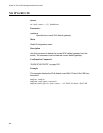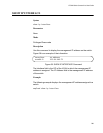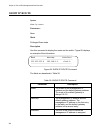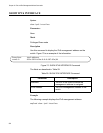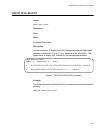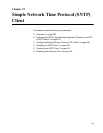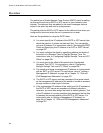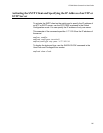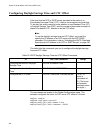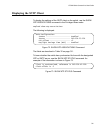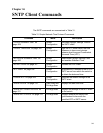
Chapter 15: Simple Network Time Protocol (SNTP) Client
296
Overview
The switch has a Simple Network Time Protocol (SNTP) client for setting
its date and time from an SNTP or NTP server on your network or the
Internet. The date and time are added to the event messages that are
stored in the event log and sent to syslog servers.
The switch polls the SNTP or NTP server for the date and time when you
configure the client and when the unit is powered on or reset.
Here are the guidelines to using the SNTP client:
You must specify the IP address of the SNTP or NTP server from
which the switch is to obtain the date and time. You can specify
only one IP address. For instructions, refer to “Activating the SNTP
Client and Specifying the IP Address of an NTP or SNTP Server”
on page 297.
You must configure the client by specifying whether the locale of
the switch is in Standard Time or Daylight Savings Time. For
instructions, refer to “Configuring Daylight Savings Time and UTC
Offset” on page 298.
You must specify the offset of the switch from Coordinated
Universal Time (UTC). For instructions, refer to “Configuring
Daylight Savings Time and UTC Offset” on page 298.
The switch must have a management IP address to communicate
with an SNTP or NTP server. For instructions, refer to “Adding a
Management IP Address” on page 44 or Chapter 13, “IPv4 and
IPv6 Management Addresses” on page 257.
The SNTP or NTP server must be a member of the same subnet
as the management IP address of the switch or be able to access it
through routers or other Layer 3 devices.
If the management IP address of the switch and the IP address of
the SNTP or NTP server are members of different subnets or
networks, you must also assign the switch a default gateway. This
is the IP address of a routing interface that represents the first hop
to reaching the remote network of the SNTP or NTP server. For
instructions, refer to “Adding a Management IP Address” on
page 44 or Chapter 13, “IPv4 and IPv6 Management Addresses”
on page 257.



